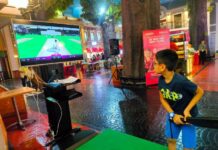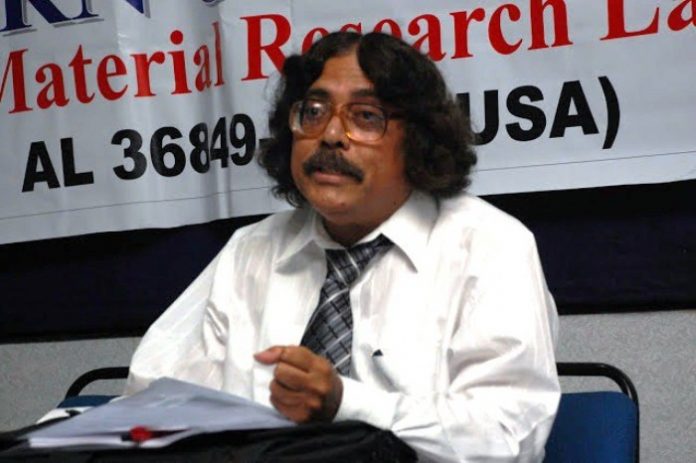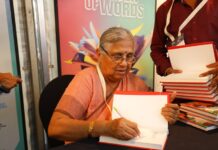Why Nobel Prize Not Given for conductivity of “Nonconjugated” polymer?
New Delhi, November 20, 2018: With the Royal Swedish Academy of Sciences (RSAS) that gives the Nobel Prize is engaged in flagrant violation of high academic norms by denying major scientific discoveries and their discoverers, it is time that the world leaders must step in to correct it.
Prof. Mrinal Thakur, the Director of Photonic Materials Research Laboratory at Auburn University (USA), alleged this claiming though the 2000-Chemistry Nobel Prize was awarded for the discovery of Conductive Polymers, it went only to those who discovered “Conjugated” conductive polymers.
According to Prof. Thakur, nominated for the Chemistry Nobel Prize for 16-times, no credit was given to him for his discovery of “Nonconjugated” conductive polymers first reported in 1988. As per the academic norms, he should have been given the Nobel Prize following his discovery of conductivity of “Nonconjugated” polymer.
In a statement here, Prof. Thakur claimed the Nobel Foundation Website contains incorrect information as Alan Heeger, A.G. MacDiarmid and H. Shirakawa, the 2000-Chemistry Nobel Prize recipients, wrongly stated only conjugated polymers are electrically conductive whereas “Nonconjugated” polymers are also conductive.
The legal communications involving US attorneys established these Nobel Prize recipients agreed at the scientific and legal-levels that Prof. Thakur’s experimental works and theory are fundamentally correct while theirs are fundamentally incorrect.
The Nobel Foundation Website, stating a polymer must be conjugated to be electrically conductive, did not correct it though “Nonconjugated” polymers are also conductive.
Prof. Thakur claimed the Royal Swedish Academy of Sciences even victimized him for bringing out the anomalies in the website by stopping research funding in 2003.
Though Prof. Thakur sought assistance of Prime Ministers of India and Sweden and the US President to resolve these critical issues, nothing fruitful transpired as yet.
Staking Claim for the 2014 Nobel Prize in Chemistry
Prof. Thakur stakes claim to the 2014 Chemistry Nobel Prize since “Super-resolved Fluorescence Microscopy” (topic of 2014 Nobel in Chemistry) is primarily based on earlier nonlinear optical experimental and theoretical studies performed by him and his colleagues on organic materials.
The research papers were published in Applied Physics Letters, Physical Review Letters, MRS Proceedings, Macromolecules and Optics Letters in 1985 and onwards. Prof. Thakur’s works were published at least 10-years prior to those of the 2014 Nobel Prize recipients.
The written statute of Nobel Prize says award should be given to recognize the earliest and most original works in a given field of sciences. It was not followed in the 2014 Nobel Prize in Chemistry.
The entire gamut of polymer scientists, however, accepted that his research made wide impact in polymer science and in the research fields of nonlinear optics and nanoparticles.
Nonconjugated Conductive Polymers As Anti-Radiation Shield
Prof. Thakur’s scientific discoveries involves protection against nuclear radiation including radioactive iodine applicable both in the cases of atomic reactors and hospitals treating thyroid cancer patients through polymers.
The polymers, efficiently absorbing iodine when iodine atoms come in contact with them rendering the iodine atoms immobile, can be installed as layer/sheet in all nuclear reactor or nuclear waste storage facility to absorb emitted radioactive iodine and stop its leakage in the environment.
Radioactive iodine is extremely dangerous since it remains as a vapor at ordinary temperature and can travel long distances by air-currents as seen in the case of Japan’s Fukushima disaster when radioactive iodine reached California (USA) crossing the Pacific Ocean.
Polymers can safeguard the living beings/environment against radioiodine emission caused by nuclear power plants, nuclear spent-fuel-rods, rocket/space satellite launching stations, nuclear-powered ships/submarines and in hospitals where nuclear medicine administered.
As the human body absorbs radioactive iodine causing thyroid cancer, the doctors, nurses and attendees are exposed to it during and after radio-iodine therapy of patients having thyroid cancer and hyperthyroidism.
Patients emit radiation for a number of days after taking a capsule containing radioiodine. Use of apparels made of the “Nonconjugated” conductive polymers reduces the potential exposure to radioiodine and lessens the anxiety.
Corporate Comm India(CCI Newswire)






























